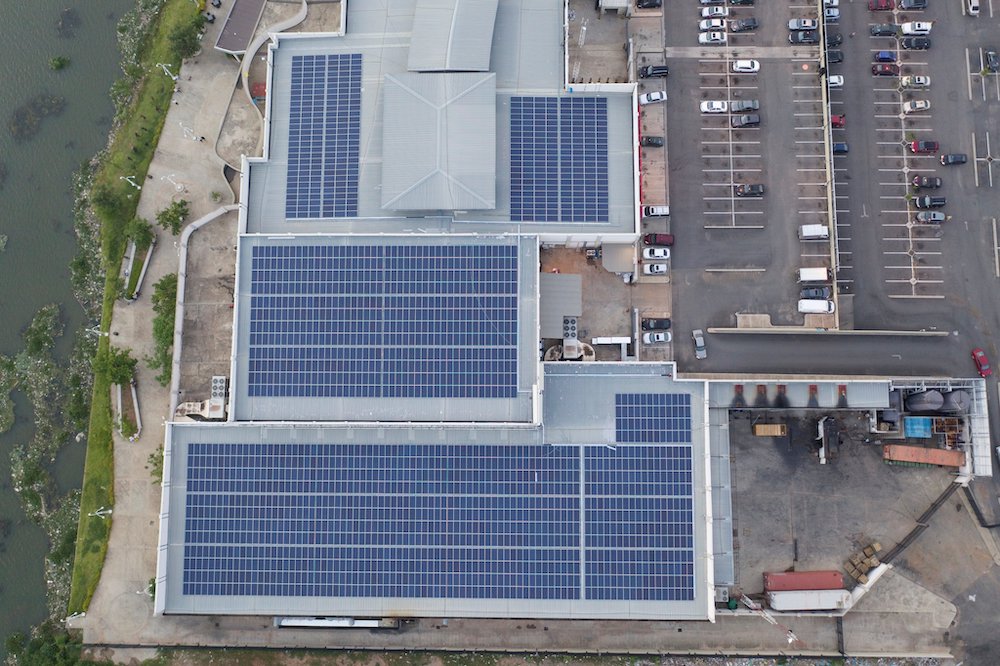ImpactAlpha, Nov. 24 – An African solar energy fund that only five years ago appeared too risky even for impact investors has delivered, yes, impact – and a hefty return.
CrossBoundary Energy has sold its 40-megawatt off-grid solar portfolio to ARCH Emerging Markets Partners, giving its investors a full exit and a 15% return. The blended-finance facility also helped unlock financing for a fast-growing sector of Africa’s energy market: rooftop solar for commercial and industrial users.
“Distributed renewables are becoming an accepted reality and an increasing trend across Africa,” CrossBoundary Energy’s Pieter Joubert told ImpactAlpha. “The moral of this story is that the energy market in Africa needs attention across the spectrum.”
ARCH invested $40 million to acquire the portfolio and enable CrossBoundary Energy to deliver new rooftop solar installations for Africa’s large commercial businesses and industrial users.
What allowed the fund to get off the ground in 2015 was a $1.3 million first-loss recoverable grant from USAID’s Power Africa initiative. That risk-reducing cushion enabled CrossBoundary Energy to convince impact investors to back its then unproven thesis: that Africa’s commercial and industrial users would pay for on-site power. CrossBoundary Energy leveraged the commitment to raise more than $6 million from Blue Haven Initiative, Ceniarth, Slocum Investments, Treehouse Investments and others.
At the time, most solar companies in Africa focused on remote, low-income households who lived completely off of the electricity grid – not corporations and industrial firms thought to have reliable access to electricity through national grids and back-up generators.
“The first solar conference we went to in Nairobi, the star speaker was Jesse Moore of M-Kopa,” recalls Joubert, referring to the founder of the Kenyan pay-as-you-go micro-solar company. “We were sitting in the audience wondering if we were in the wrong place.”
Many commercial and industrial users were dealing with the same energy access problems as Africa’s urban households: unreliable grid connections and expensive back-up generators. Still, they were often unable or unwilling to shoulder the hefty upfront costs of rooftop solar systems and accompanying battery storage systems.
CrossBoundary Energy began raising funds to finance rooftop solar for these larger users. Its model hinged on signing power purchase agreements with commercial and industrial entities, guaranteeing that they would pay for the energy they consumed and that the rooftop systems would be financially viable. CrossBoundary Energy would then partner with local developers to finance, build and manage the rooftop systems.
Catalytic capital
Arriving at that model took some experimentation, Joubert admits. “The journey was quite a bit harder than we expected. We were maybe a few years too early.”
To quell investors’ uncertainty about the market and the model, CrossBoundary Energy leveraged a $1.3 million first-loss guarantee from USAID’s Power Africa initiative, which aims to facilitate 30,000-megawatts of new clean energy on the continent.
“That was a really important part of the equation for us,” Blue Haven Initiative’s Lauren Cochran says. “We saw the opportunity, but there was a lot of uncertainty on everything from whether they could import the panels to get the projects up and running to collecting payments.” Worst case, she adds, “the first loss capital meant we would at least get some of our money back.”
OPIC (now the U.S. International Development Finance Corp.), the Shell Foundation, and the U.K.’s Foreign, Commonwealth and Development Office kicked in grant capital to cover the fund’s operational costs.
CrossBoundary Energy helped finance and install 40-megawatts of solar generating capacity and 10-megawatt-hours of battery storage projects in Kenya, Rwanda, Ghana, Madagascar, Uganda, Sierra Leone, Zambia and Nigeria. It has 20 clients, including Unilever, Rio Tinto, Heineken and local companies like Ghana’s Kasapreko and Kenya’s Xflora Group.
Africa’s commercial and industrial solar sector grew exponentially over the life of the fund, from 4 megawatts of installed solar capacity in 2015 to more than 60 megawatts in early 2019. At least 110 megawatts of additional capacity are under development, according to a report from BNEF and responsAbility. The current estimated demand on the continent could support 3.5-gigawatts of installed commercial and industrial rooftop solar capacity.
With the success of its fund and new capital from ARCH, CrossBoundary Energy will continue to finance and develop new solar projects, while managing the existing portfolio. CrossBoundary Energy is now eyeing $100 million to “allow us to take the commercial and industrial sector to scale across Africa, and in doing so, further reduce energy costs for our customers, create additional jobs within the solar sector, and significantly reduce carbon emissions,” says Joubert.
He acknowledges that getting to that point would have taken longer and been much harder if not for USAID’s catalytic grant, which notched a 5% return and has now been leveraged to raise 30X commitments from private investors. Power Africa’s Mark Carrato called the exit a “validation” of the initiative’s “emphasis on helping catalyze the private sector to provide life-changing access to electricity across sub-Saharan Africa.”
An earlier version of this article inaccurately stated that CrossBoundary Energy investors made a 15X return. It was 15%.











